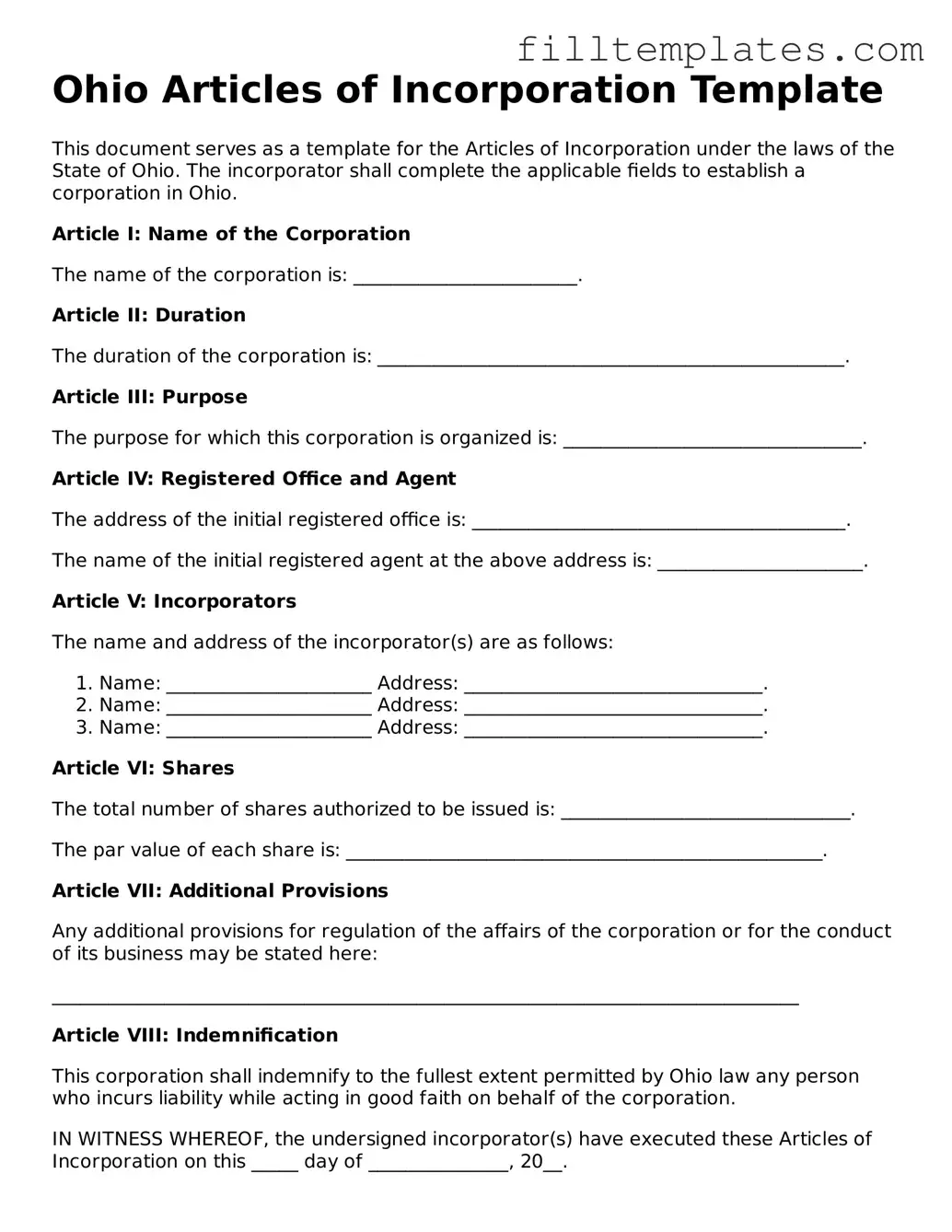Ohio Articles of Incorporation Template
This document serves as a template for the Articles of Incorporation under the laws of the State of Ohio. The incorporator shall complete the applicable fields to establish a corporation in Ohio.
Article I: Name of the Corporation
The name of the corporation is: ________________________.
Article II: Duration
The duration of the corporation is: __________________________________________________.
Article III: Purpose
The purpose for which this corporation is organized is: ________________________________.
Article IV: Registered Office and Agent
The address of the initial registered office is: ________________________________________.
The name of the initial registered agent at the above address is: ______________________.
Article V: Incorporators
The name and address of the incorporator(s) are as follows:
- Name: ______________________ Address: ________________________________.
- Name: ______________________ Address: ________________________________.
- Name: ______________________ Address: ________________________________.
Article VI: Shares
The total number of shares authorized to be issued is: _______________________________.
The par value of each share is: ___________________________________________________.
Article VII: Additional Provisions
Any additional provisions for regulation of the affairs of the corporation or for the conduct of its business may be stated here:
________________________________________________________________________________
Article VIII: Indemnification
This corporation shall indemnify to the fullest extent permitted by Ohio law any person who incurs liability while acting in good faith on behalf of the corporation.
IN WITNESS WHEREOF, the undersigned incorporator(s) have executed these Articles of Incorporation on this _____ day of _______________, 20__.
Signature of Incorporator: ______________________________________.
Name of Incorporator (printed): ________________________________.
